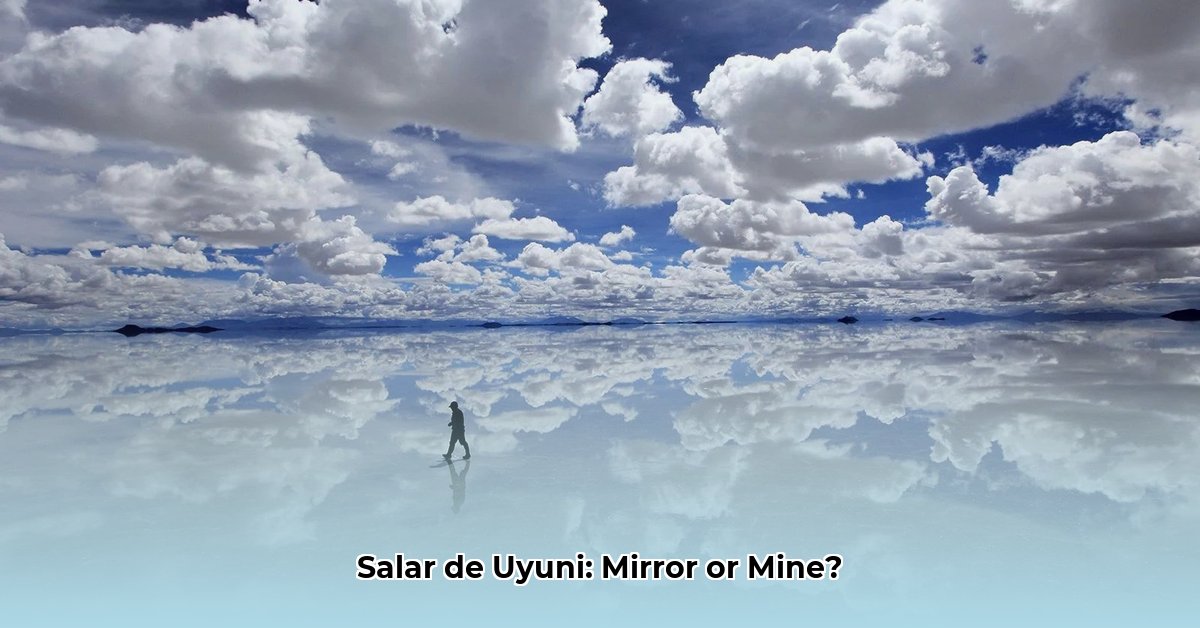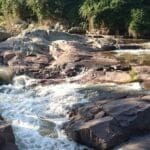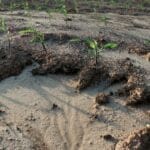Imagine standing on a seemingly endless expanse of bright white salt, the sky above reflecting perfectly in the shallow water below. This is Salar de Uyuni, the world’s largest salt flat in Bolivia. It’s a place of breathtaking beauty, a natural mirror that captivates all who visit. But beneath its stunning surface lies another treasure: a vast reserve of lithium, a critical component in the batteries that power our modern world. The challenge? How to extract this valuable resource while protecting this unique environment and ensuring the benefits are shared equitably. For innovative remediation solutions, explore this link on bioremediation techniques. This article explores the delicate balance between economic opportunity and environmental responsibility, focusing on strategies for sustainable lithium extraction in Salar de Uyuni.
Salar de Uyuni: Landscape and Resource Potential
The Salar de Uyuni isn’t just a scenic wonder; it’s a geological marvel. Formed by the evaporation of prehistoric lakes, the salt flat stretches over 10,000 square kilometers, a landscape sculpted by time and the unique climate of the Bolivian Altiplano. This vast expanse holds one of the world’s largest lithium deposits, estimated to be approximately 21 million tons. This positions Bolivia as a key player in the global transition to electric vehicles and renewable energy storage. However, accessing this resource responsibly is paramount.
Lithium’s Promise and the Challenges of Sustainability
The prospect of a “lithium boom” presents Bolivia with tremendous economic opportunities. Increased government revenue, job creation, and infrastructure development could significantly improve the lives of Bolivians. Lithium is the lifeblood of electric vehicle batteries and energy storage systems. Bolivia can play a significant role in the development of green technologies. But realizing this potential requires careful planning, responsible environmental practices, and a commitment to social equity. Failing to address these challenges could jeopardize the long-term sustainability of the Salar de Uyuni and its surrounding communities.
Environmental Stakes: Protecting a Fragile Ecosystem
The Salar de Uyuni’s delicate ecosystem is home to unique flora and fauna, including three species of flamingos that rely on the salt flat’s brine shrimp for sustenance. Extracting lithium can disrupt this fragile balance in several ways:
- Water Depletion: Traditional lithium extraction methods require large amounts of water, potentially lowering the water table and impacting the availability of freshwater resources for both the ecosystem and local communities.
- Pollution: The extraction process can release harmful chemicals into the soil and water, contaminating the environment and harming wildlife.
- Habitat Destruction: Infrastructure development, such as roads and processing plants, can fragment habitats and disrupt migration patterns.
Protecting this unique environment requires a commitment to minimizing environmental impact and implementing sustainable extraction practices. Without focus on environmental conservation, the entire ecosystem is at risk.
Technological Innovation: Enabling Sustainable Extraction
Fortunately, innovative extraction technologies are emerging that offer more sustainable alternatives to traditional methods. Direct Lithium Extraction (DLE) technologies, for example, can significantly reduce water consumption and minimize the use of harmful chemicals. These methods selectively extract lithium from the brine, leaving other minerals behind, reducing waste and environmental impact. Membrane separation, adsorption, and ion exchange are just a few of the DLE techniques being explored. While these technologies are promising, further research and development are needed to optimize their effectiveness and ensure their long-term viability.
Social and Cultural Considerations: Empowering Local Communities
The Salar de Uyuni is not just a natural wonder; it’s also home to indigenous communities who have lived in the region for centuries. These communities have a deep cultural connection to the land and rely on it for their livelihoods. Any lithium extraction project must respect their rights, protect their cultural heritage, and ensure they benefit from the economic opportunities generated. This requires:
- Meaningful Consultation: Engaging local communities in the decision-making process and incorporating their input into project planning.
- Equitable Benefit-Sharing: Ensuring that a portion of the revenue generated from lithium extraction is used to fund community development projects, such as schools, healthcare clinics, and infrastructure improvements.
- Cultural Preservation: Protecting cultural heritage sites and supporting initiatives that promote the preservation of local traditions.
A Path to Sustainable Development: Collaborative Action
Sustainable lithium extraction in Salar de Uyuni requires a collaborative effort involving the Bolivian government, international corporations, local communities, and environmental organizations. Each stakeholder has a critical role to play:
- The Bolivian Government: Establishing clear environmental regulations, promoting transparency, and ensuring that local communities benefit from lithium extraction.
- International Corporations: Investing in sustainable extraction technologies, adhering to the highest environmental and social standards, and engaging in meaningful partnerships with local communities.
- Local Communities: Participating in decision-making processes, advocating for their rights, and holding stakeholders accountable.
- Environmental Organizations: Monitoring environmental impacts, promoting sustainable practices, and advocating for stronger regulations.
Actionable Steps Towards Sustainability
| Stakeholder | Short-Term Actions | Long-Term Goals |
|---|---|---|
| Bolivian Government | Develop and enforce stringent environmental regulations; establish community consultation mechanisms. | Establish a national lithium policy that prioritizes environmental protection, social equity, and economic diversification. |
| International Companies | Invest in R&D for cleaner extraction methods; commit to transparent operations; partner with local communities. | Implement rigorous environmental and social standards throughout supply chain; ensure fair compensation and community benefits. |
| Local Communities | Engage in decision-making; demand fair compensation; promote economic diversification. | Secure long-term economic benefits; maintain control over land and resources; preserve cultural heritage. |
| Environmental NGOs | Monitor environmental impacts; advocate for regulations; support community-based monitoring initiatives. | Promote sustainable development; ensure ecosystem health; hold stakeholders accountable. |
The future of Salar de Uyuni depends on our collective commitment to sustainability. By working together, prioritizing responsible development, and investing in innovative solutions, we can harness the economic potential of this unique salt flat while protecting its natural beauty and cultural significance for generations to come.
Mitigating Environmental Risks: Strategies for Responsible Lithium Extraction
Key Considerations:
- Salar de Uyuni presents a potential lithium goldmine, but it’s crucial to address environmental risks.
- High arsenic levels in brine threaten wildlife and ecological balance.
- Groundwater depletion and land subsidence are long-term concerns, as seen in Chile’s Salar de Atacama.
- Effective mitigation requires a comprehensive, multi-faceted approach.
The Promise of Lithium and its Environmental Implications
Bolivia’s Salar de Uyuni, the world’s largest salt flat, holds immense potential as a key player in the global energy transition. However, responsible lithium extraction demands a thorough understanding and proactive mitigation of potential environmental impacts. Balancing economic benefits with ecological preservation is essential.
Understanding the Environmental Risks: A Delicate Balance
Common lithium extraction methods can pose significant environmental challenges. High arsenic concentrations—reaching nearly 50 ppm—in evaporation ponds is a major concern. This exceeds ecological safety limits, endangering iconic flamingos and other wildlife. The long-term consequences of arsenic bioaccumulation are still unknown, highlighting the need for rigorous monitoring. Brine extraction also carries the risk of groundwater depletion and land subsidence, with potentially irreversible damage.
Innovative Technologies: Bridging the Gap Sustainably
The unique conditions of Salar de Uyuni necessitate innovative technological solutions. Current evaporation pond methods are inefficient and environmentally taxing. Advanced wastewater treatment is critical to reduce arsenic levels. Closed-loop systems can minimize water usage and waste. Direct lithium extraction (DLE) is emerging as a promising alternative, offering potentially less disruptive extraction.
Social Equity: Prioritizing Local Communities
Responsible lithium extraction must prioritize social equity. Local communities must be actively involved, benefiting fairly from the resource boom. Neglecting their concerns risks social instability and conflict. Protecting cultural heritage sites within the Salar is also paramount. Sustainable tourism can complement lithium mining, but only with careful planning.
Regulatory Frameworks: Guiding Principles for Sustainability
Bolivia’s regulatory framework must adapt to address the environmental challenges. Stricter environmental monitoring and enforcement are essential. Environmental impact assessments should be mandatory. International best practices should inform regulations. Transparency and accountability are key to building trust and ensuring the long-term sustainability of this invaluable resource.
Pathways to Sustainability: A Collaborative Roadmap
Successful sustainable lithium mining requires a collaborative effort. Here are actionable steps for each stakeholder:
Bolivian Government:
- Strengthen environmental regulations and monitoring systems.
- Invest in research for improved brine re-injection techniques and DLE technologies.
- Ensure transparent and equitable benefit-sharing with local communities.
Lithium Mining Companies:
- Adopt advanced wastewater treatment and closed-loop systems to minimize environmental impact.
- Invest in and implement sustainable extraction technologies like DLE.
- Foster open communication and collaboration with local communities to address concerns and ensure mutual benefits.
International Organizations:
- Provide technical and financial assistance to Bolivia to support sustainable lithium extraction practices.
- Support research on sustainable lithium extraction methods and promote the adoption of best practices globally.
- Facilitate knowledge sharing and collaboration between stakeholders.
Scientific Community:
- Conduct research on arsenic bioaccumulation and its toxicological effects to inform mitigation strategies.
- Develop predictive models for groundwater depletion and land subsidence to guide sustainable water management.
- Investigate the feasibility and environmental impact of alternative extraction methods like DLE.
Local Communities:
- Engage in open dialogue with stakeholders to ensure their voices are heard in decision-making processes.
- Ensure equitable benefit-sharing arrangements are in place to support community development and improve livelihoods.
- Prioritize community health monitoring and environmental protection to safeguard their well-being.
Risk Assessment Matrix: Quantifying Potential Impacts
| Technology/Practice | Probability of Failure | Severity of Impact | Risk Level | Mitigation Strategies |
|---|---|---|---|---|
| Current Evaporation Ponds | High | High | Very High | Implement advanced wastewater treatment; explore alternative extraction methods; stricter monitoring. |
| Improper Brine Re-injection | Medium | Medium | Medium | Conduct thorough mixing studies; develop optimized injection protocols; monitor groundwater quality. |
| Lack of Community Engagement | High | High | Very High | Establish open communication channels; ensure equitable benefit-sharing; prioritize community health. |
| Insufficient Environmental Monitoring | High | High | Very High | Implement robust monitoring programs; increase transparency of data; involve local communities in monitoring. |
















